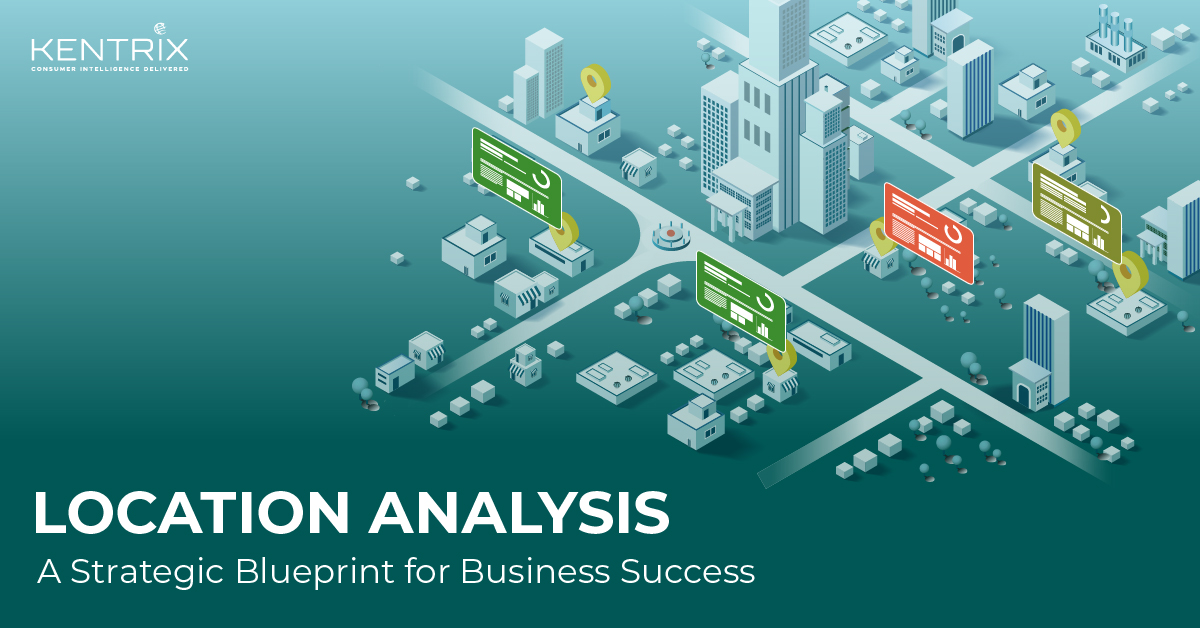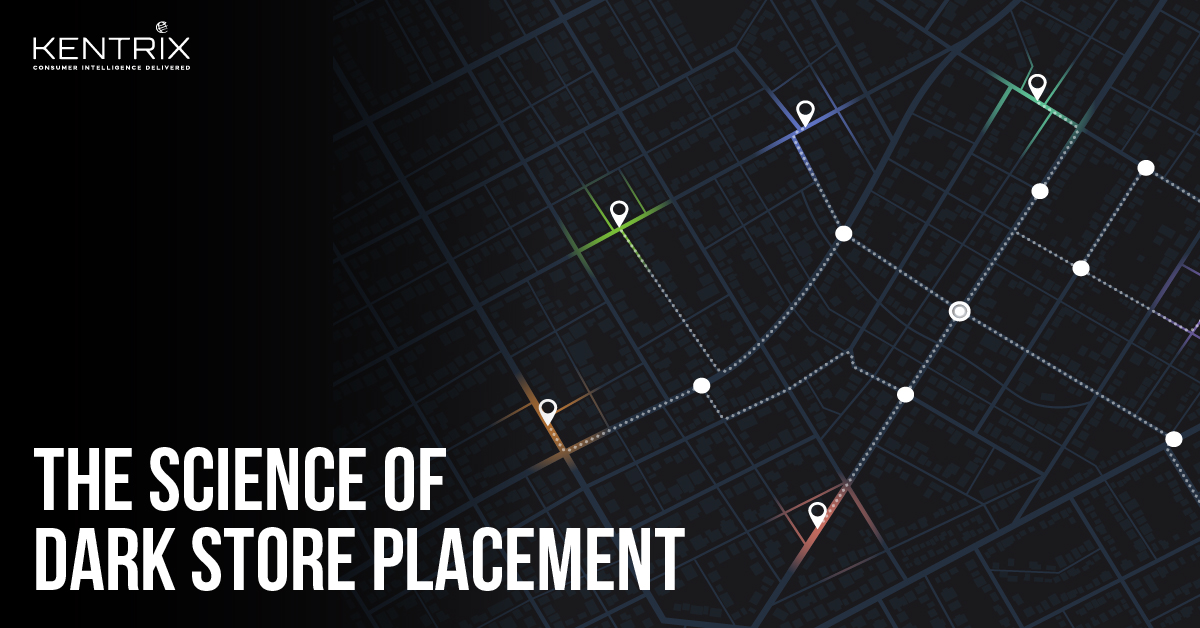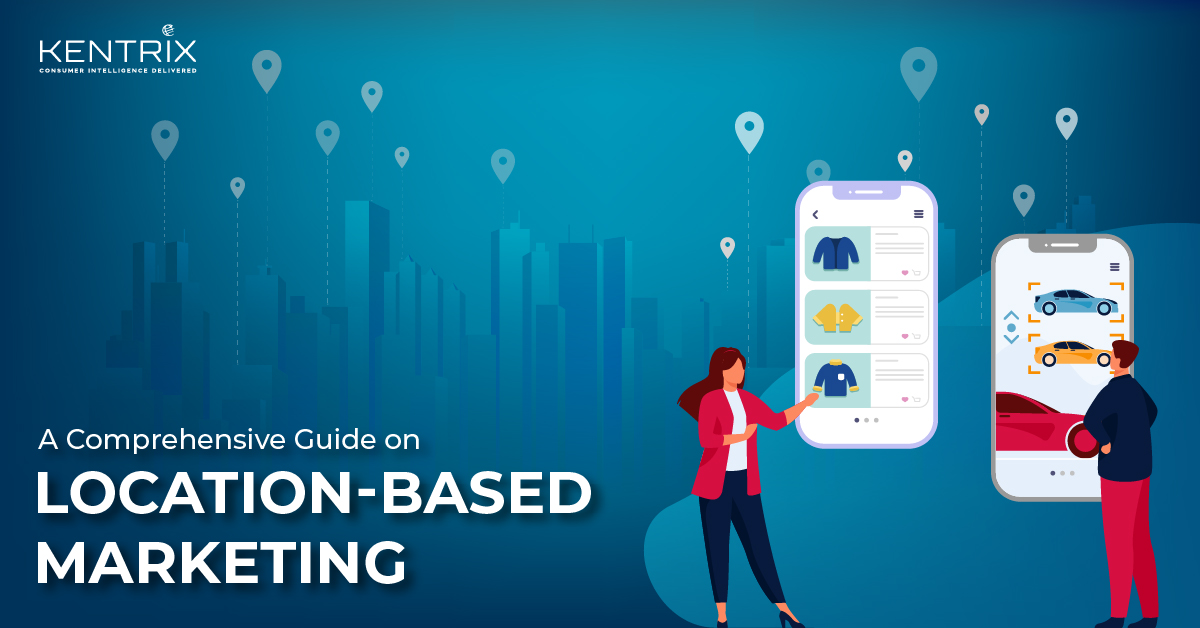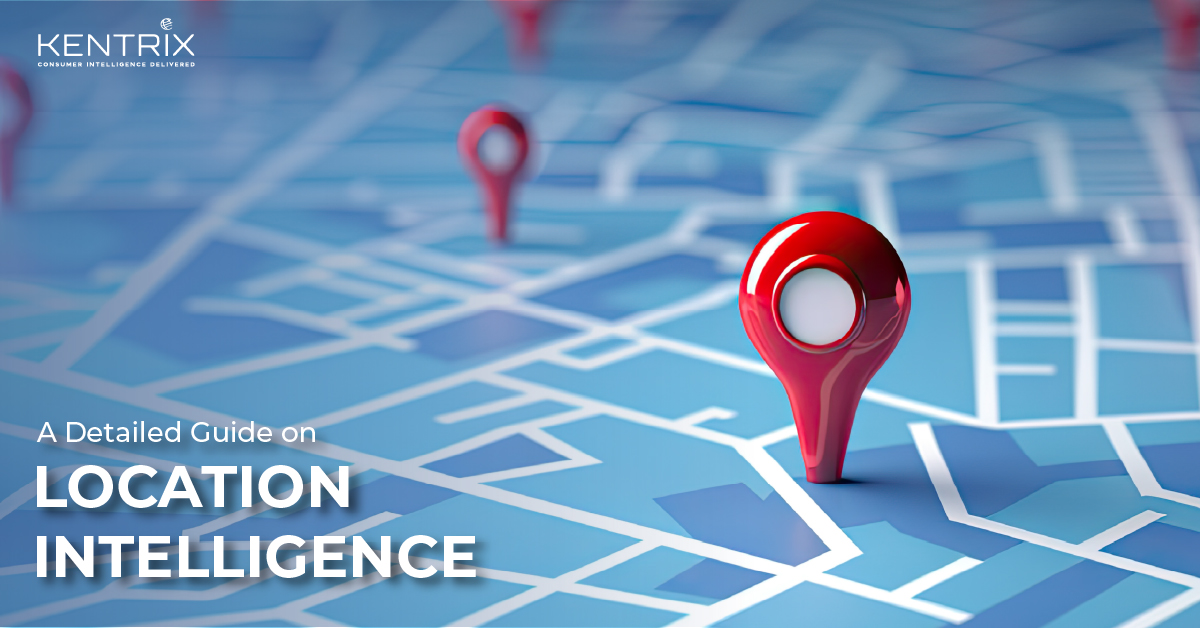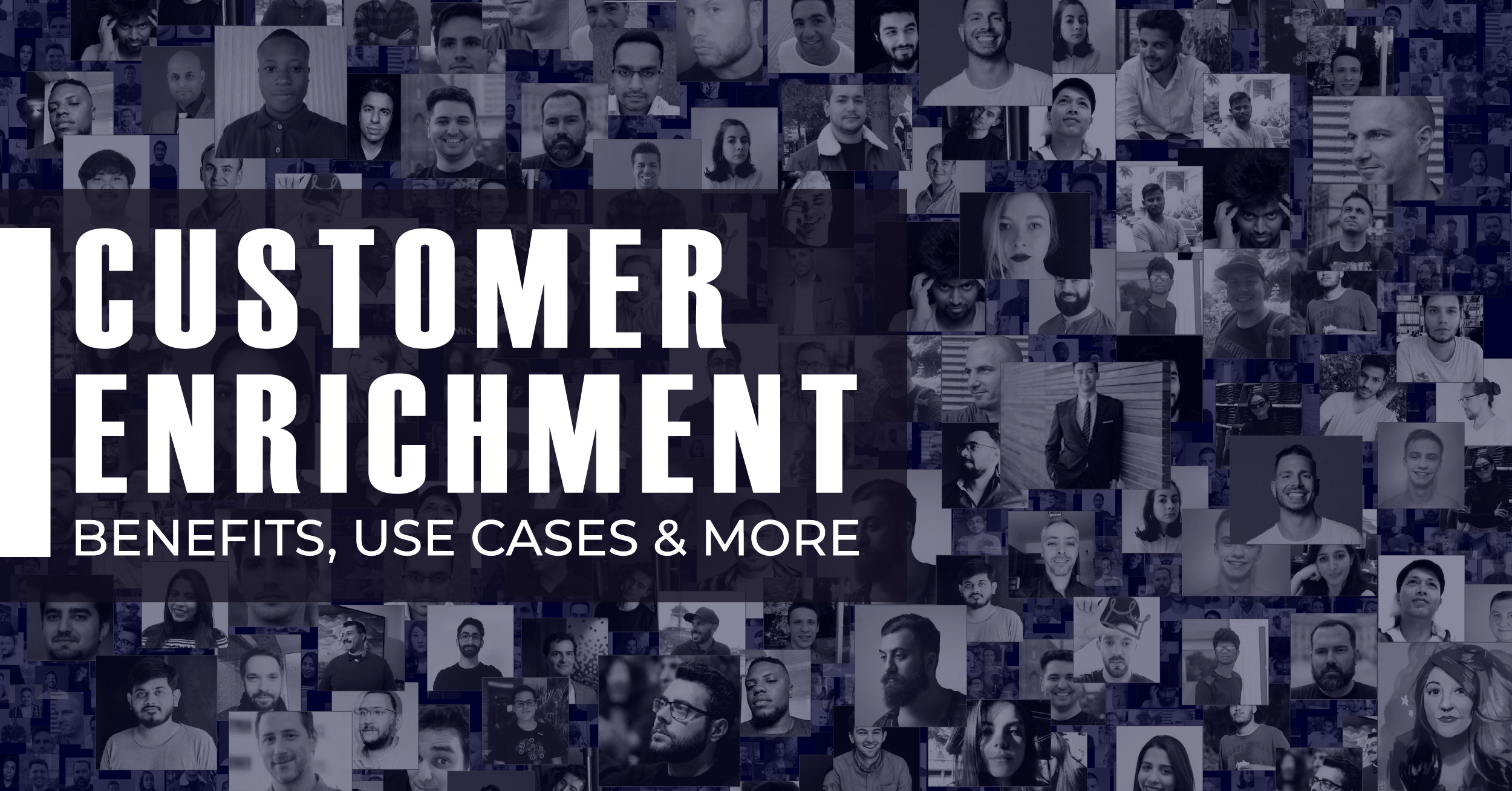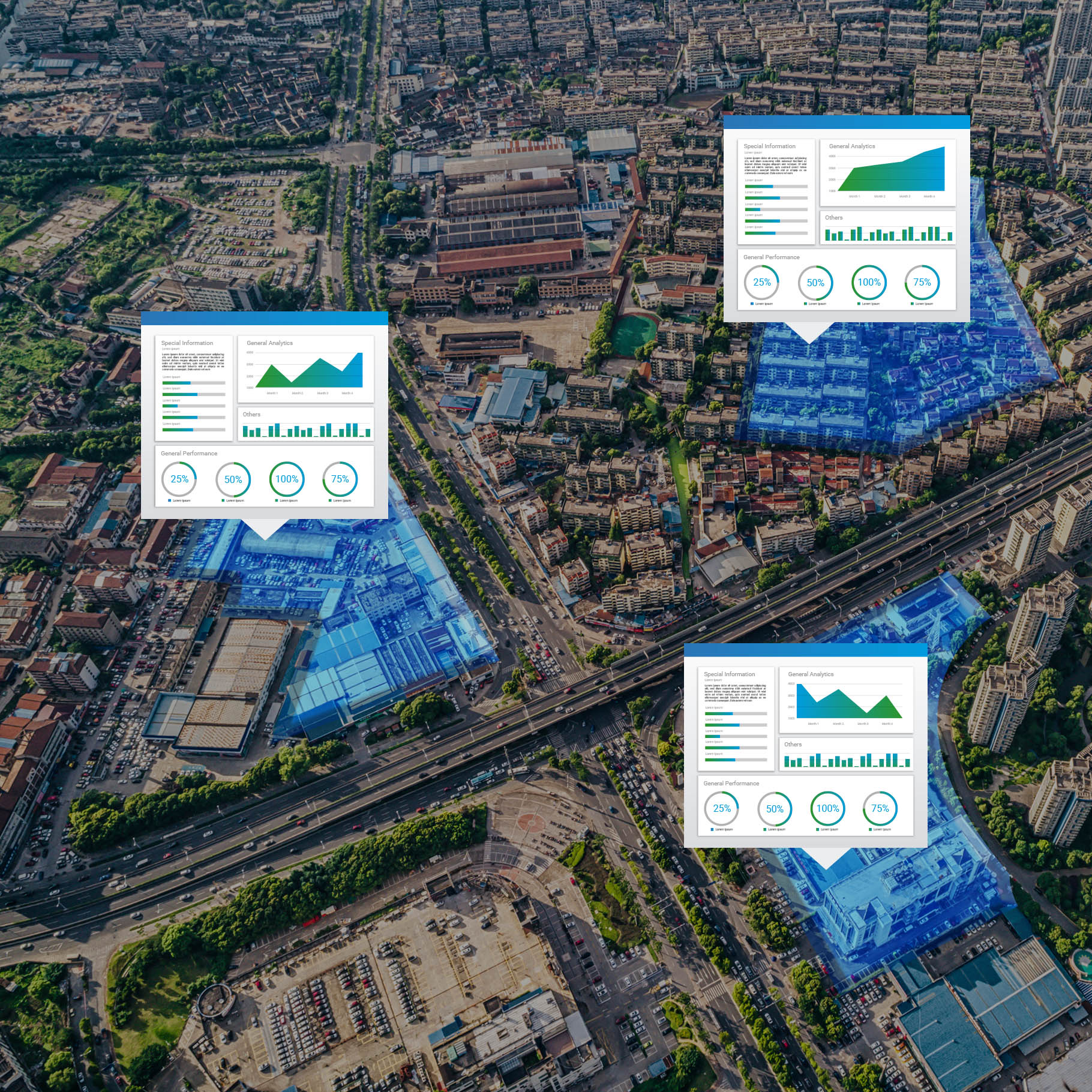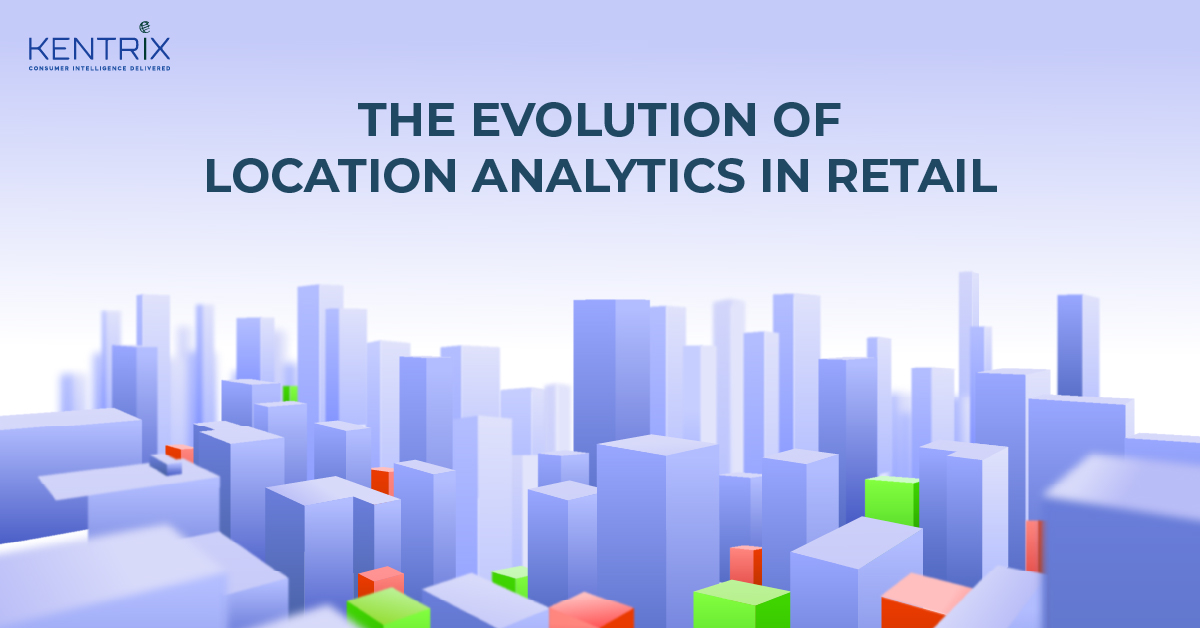
Walk into any successful retail district in India, and you’ll notice something fascinating. The same retailer might operate three different store formats within walking distance of each other—a flagship experience center, a compact convenience format, and perhaps even a kiosk. Each serves the same brand promise but in completely different ways, each perfectly aligned with its immediate surroundings.
This isn’t random experimentation. It’s the result of sophisticated location intelligence that understands retail success requires far more than finding busy corners.
Understanding the Retail Location Paradox
For decades, retailers believed location analysis meant one thing: finding high-traffic areas with the right demographics. The formula seemed simple—more footfall plus higher incomes should equal better sales. Yet every retailer has stories of “perfect” locations that mysteriously underperformed while seemingly average sites exceeded all expectations.
The truth is that traditional location analysis treats all retail as identical, when in reality, success depends on a complex interplay of factors that change dramatically even within the same neighborhood. A clothing store’s ideal format in a business district differs vastly from what works in a residential area, even if both locations show similar footfall numbers.
Consider how shopping behavior shifts within a single kilometer in any Indian metro. Near office complexes, shoppers seek efficiency—they know what they want and value quick transactions. Move toward residential areas, and the same consumers become browsers, enjoying discovery and seeking experiences. Traditional location analysis sees two “good” locations. Modern location analytics sees two entirely different business opportunities requiring different approaches.
The Transformation of Retail Location Analytics
Modern location analytics in retail has evolved from asking “where should we open?” to answering “how should we operate here?” This shift recognizes that retail success comes from alignment—matching your format, size, product mix, and service model to the specific needs and behaviors of each micro-market.
Think of location analytics as developing a deep understanding of the local retail ecosystem. Just as a botanist wouldn’t plant the same seeds in desert and rainforest expecting identical results, retailers can’t apply the same format everywhere and expect uniform success. Each location has its own rhythm, preferences, and unwritten rules that determine what thrives and what struggles.
The evolution happened because retailers started noticing patterns that defied conventional wisdom. Premium brands discovered that smaller stores often outperformed larger ones in certain areas, not because of space constraints, but because local consumers valued curation over choice. Fashion retailers found that the same merchandise mix that flew off shelves in one store gathered dust two neighborhoods away. These observations led to a fundamental rethinking of how location analytics should work.
5 Core Pillars of Location Analytics in Retail
To understand modern location analytics in retail, imagine you’re not just choosing where to plant a store, but designing a living organism that must thrive in a specific environment. This requires understanding five interconnected dimensions that determine success.
-
Location Selection: Reading the Retail Ecosystem
Modern location selection goes far beyond counting passersby. It’s about understanding the complete ecosystem surrounding a potential site. This means analyzing micro-mobility patterns—not just how many people pass by, but where they’re coming from, where they’re going, and what mindset they’re in during different times.
Temporal patterns reveal another layer of complexity. A location that buzzes with office workers seeking quick lunch purchases transforms into a leisurely shopping destination on weekends. The retail opportunity isn’t singular, it’s multiple opportunities that shift throughout the day and week. Understanding these rhythms helps retailers design operations that capture maximum value from each time period.
Competition analysis in modern location analytics examines not just who else is present, but what formats succeed and why. Sometimes clustering near competitors amplifies success by creating retail destinations. Other times, differentiation through format or timing captures underserved segments. The key is understanding the local competitive dynamics rather than applying universal rules.
- Format Optimization: Designing for Local Success
Perhaps no insight has transformed retail thinking more than realizing the same brand needs different expressions in different locations. Format optimization through location analytics recognizes that retail success comes from matching store design to local shopping behaviors and preferences.
In areas where consumers are time-pressed and task-focused, express formats with simplified ranges and quick checkout excel. Where shopping is social and experiential, larger formats with discovery zones and service areas thrive. Transit locations need grab-and-go efficiency, while destination shopping areas can support immersive brand experiences.
The intelligence comes from identifying which consumer mindsets dominate in each micro-market and designing formats that serve those specific needs. This isn’t about having multiple format options and guessing which fits where—it’s about data revealing exactly what each location demands.
- Store Size Optimization Calibration: The Goldilocks Principle
Retail space costs money—rent, utilities, staffing, inventory carrying costs all scale with size. Yet bigger isn’t always better. Modern location analytics helps retailers find the “just right” size for each location by understanding how space utilization varies with local shopping patterns.
In some locations, consumers shop with specific items in mind, making large browsing areas wasteful. Compact stores with carefully curated selections perform better. In others, discovery drives purchases, and reducing space constrains sales. The analysis reveals these patterns by studying how store size correlates with key metrics like sales per square foot, conversion rates, and basket sizes across different location types.
Size optimization also considers operational efficiency. A store that’s too large for its location struggles with staffing costs and energy efficiency. One that’s too small faces stockout issues and customer flow problems. Location analytics identifies the sweet spot where customer experience, operational efficiency, and financial performance align.
- Assortment Intelligence: Hyperlocal Product Planning
Walk into successful retail stores in different parts of the same city, and you’ll notice subtle but important differences in what’s stocked and how it’s presented. This isn’t random variation—it’s assortment intelligence powered by location analytics.
Product preferences vary dramatically based on local demographics, lifestyle patterns, and cultural nuances. What sells as everyday essentials in one neighborhood becomes special occasion purchases in another. Price sensitivity shifts not just with income levels but with local shopping cultures and competitive dynamics.
Modern location analytics reveals these patterns by analyzing transaction data, identifying which products show strong local affinity versus universal appeal. This enables retailers to maintain brand consistency while achieving local relevance—stocking core ranges everywhere while tailoring additional selections to local preferences.
- Infrastructure Alignment: Supporting Omnichannel Retail Models
The fifth dimension often overlooked in traditional analysis is infrastructure alignment—ensuring the location can support the intended retail operation efficiently. This goes beyond checking for parking or public transport access to understanding how local infrastructure enables or constrains different retail models.
Delivery accessibility matters increasingly as retail blends physical and digital channels. Some locations naturally support click-and-collect models due to convenient customer flow patterns. Others might excel at ship-from-store fulfillment due to strategic positioning relative to residential areas. Staff availability, local supplier networks, and even utility reliability factor into operational success.
Location analytics examines these infrastructure elements to ensure operational excellence is achievable, not just hoped for. A beautiful store concept fails if it can’t be executed consistently due to location-specific constraints.
How AI Supercharges Location Analytics in Retail
The complexity of analyzing these five dimensions simultaneously, across hundreds of potential locations, while factoring in competitive dynamics and market evolution, exceeds human analytical capacity. This is where artificial intelligence transforms location analytics from an art to a science.
At Kentrix, our collaboration with Stanford University produced an AI engine specifically designed for the complexities of retail location analysis in Indian markets. Rather than applying generic algorithms, we developed systems that understand the unique patterns and dynamics of Indian retail.
The AI doesn’t just process data, it simulates futures. Before any investment, it models thousands of scenarios. What if you open a large format store versus a compact one? How would sales change with different product mixes? What happens if a competitor opens nearby? Each simulation incorporates local market dynamics, creating a probabilistic view of potential outcomes.
Machine learning enables the system to recognize subtle patterns humans miss. It might discover that stores near schools perform better with certain payment options, or that proximity to specific types of offices correlates with demand for particular product categories. These insights emerge from analyzing millions of data points across behavioral, demographic, and transactional dimensions.
The ensemble approach combines multiple AI techniques because retail complexity demands it. Deep learning networks excel at pattern recognition in complex data. Gradient boosting predicts demand curves accurately. Optimization algorithms determine ideal formats and sizes. By combining these approaches, the system achieves significantly higher accuracy than any single method.
Continuous learning keeps the intelligence current. As markets evolve, consumer behaviors shift, and competitive landscapes change, the AI adapts its models. This isn’t static analysis based on historical data—it’s living intelligence that grows smarter with every retail outcome it observes.
Preventing Cannibalization with Smarter Location Decisions
One of the most expensive mistakes retailers make is inadvertently competing with themselves. When stores open too close together without proper analysis, they don’t capture new customers, they simply split existing ones. This cannibalization of sales represents one of the biggest sources of wasteful expenditure in retail expansion, yet it’s entirely preventable through sophisticated location analytics.
- Understanding the True Cost of Cannibalization
Retail cannibalization occurs when a new store draws customers away from existing locations rather than expanding the overall customer base. The financial impact extends far beyond simple sales redistribution. When two stores compete for the same customers, both suffer from reduced foot traffic, lower sales per square foot, decreased operational efficiency, higher marketing costs to maintain visibility, and diluted brand presence in the market.
Consider what happens when a retailer opens a new outlet just two kilometers from an existing successful store. Traditional thinking might suggest that if the area shows high demand, another store could capture overflow customers. But location analytics often reveals a different reality—the new store might capture significant business from the existing one while adding minimal new customers to the network.
The true cost includes not just the obvious capital expenditure on the new location, but also the hidden impact of two underperforming stores instead of one thriving location. Staff morale drops in both locations as sales targets become harder to achieve. Inventory management becomes complex with two locations carrying similar stock for the same customer base. Marketing spend doubles without corresponding revenue increase.
How Modern Location Analytics Predicts Cannibalization
Advanced location analytics uses AI to model complex customer behavior patterns and predict cannibalization risk before any investment is made. This goes far beyond simple radius analysis to understand the nuanced ways customers choose between retail locations.
The analysis begins with trade area modeling that reflects real-world behavior rather than arbitrary circles on a map. Drive-time analysis reveals how far customers actually travel for different types of purchases. A customer might drive 15 minutes for their weekly grocery shopping but only 5 minutes for daily essentials. These patterns vary by location, time of day, and product category.
Customer flow modeling tracks how people move through urban areas during their daily routines. Two stores might be just a kilometer apart as the crow flies, but if they’re on different commute routes, they might serve entirely different customer bases. Conversely, stores several kilometers apart might compete intensely if they’re both convenient to the same residential cluster.
Overlap analysis quantifies exactly how much customer base two locations share. Modern AI doesn’t just count overlapping populations but weights them by shopping frequency, basket value, and loyalty patterns. A 30% geographic overlap might translate to 60% revenue impact if the overlapping customers are high-value regular shoppers.
The Intelligence Behind Smart Network Planning
Location analytics transforms network planning from intuitive decisions to data-driven strategies. By simulating different expansion scenarios, retailers can identify optimal store spacing that maximizes market coverage while minimizing self-competition.
The AI considers multiple factors simultaneously when assessing cannibalization risk. Market saturation analysis reveals whether an area has untapped demand or if existing stores already serve the addressable market. Competitive dynamics show whether new locations would capture business from competitors or merely redistribute internal sales. Format differentiation opportunities identify whether different store types could coexist without significant cannibalization.
One particularly valuable insight involves understanding complementary versus competing locations. Sometimes, multiple stores in proximity can actually enhance overall network performance if they serve different need states. A large format store offering extensive range and experience can coexist with a convenience format serving quick purchases, even in close proximity, because they fulfill different customer missions.
Quantifying Impact Before Investment
Modern location analytics provides specific metrics to evaluate cannibalization risk before committing resources. Impact modeling predicts exact sales transfer between locations, helping retailers understand whether new revenue will offset any cannibalization. The analysis shows not just total impact but also which product categories, customer segments, and time periods would see the most significant effects.
Network optimization algorithms suggest alternative locations that would minimize cannibalization while maximizing incremental reach. Sometimes moving a proposed location just a few hundred meters—across a major road or transit barrier—dramatically reduces overlap while maintaining market access.
The technology also enables “what-if” analysis for different scenarios. Retailers can model the impact of opening different format stores, adjusting operating hours to reduce overlap, creating distinct positioning for nearby stores, or implementing different product mixes to serve distinct needs. This comprehensive analysis ensures expansion decisions enhance rather than dilute network performance.
Beyond Prevention: Turning Proximity into Advantage
While preventing harmful cannibalization is crucial, location analytics also reveals opportunities to turn proximity into strategic advantage. Hub strategies can work when properly planned—clustering complementary formats to create destination shopping areas that draw larger audiences than isolated stores.
The key lies in understanding when proximity creates synergy versus competition. Synergistic clustering works when stores offer truly differentiated experiences, customer bases have different primary need states, the location becomes a category destination, and operational efficiencies offset any sales overlap.
For instance, a retailer might successfully operate a large experience center alongside smaller convenience formats if the experience center draws weekend destination shoppers while convenience formats serve weekday quick-stop needs. The formats complement rather than compete, and the clustering might even enhance brand visibility and category dominance in the area.
Building Resilient Retail Networks
Ultimately, location analytics enables retailers to build resilient networks that maximize market coverage while maintaining store-level profitability. By preventing wasteful cannibalization, retailers preserve capital for genuine expansion opportunities, maintain healthy store economics across the network, create sustainable competitive advantages, and build density in markets without redundancy.
This approach transforms expansion from a numbers game to a strategic capability. Rather than racing to open maximum locations, successful retailers use location analytics to ensure each new store adds genuine value to the network. The result is stronger individual store performance, better network economics, and sustainable competitive advantage in chosen markets.
The Hidden Patterns Only AI Reveals
Perhaps the most valuable aspect of AI-powered location analytics is its ability to uncover counterintuitive insights that challenge retail conventional wisdom.
One such discovery involves store size and premium positioning. Traditional thinking suggests premium brands need large, impressive spaces. Yet analysis across multiple cities revealed that in many urban locations, smaller premium stores actually outperform larger ones. The reason? Time-pressed affluent consumers value edited selections and efficient shopping over extensive browsing options. They trust the brand to curate for them.
Another surprising pattern emerged around store clustering. Conventional wisdom warns against opening too close to competitors. But location analytics revealed specific conditions where clustering amplifies success for all retailers. When complementary retailers cluster in areas with destination shopping behaviors, they create retail ecosystems that draw larger audiences than any could attract alone.
Temporal patterns also surprised many retailers. Some locations showed inverted peak patterns—traditionally quiet afternoon periods became rush hours due to local work patterns or cultural habits. Retailers who discovered and adapted to these patterns captured previously invisible demand.
Building Your Location Analytics Strategy
Implementing location analytics in retail requires a structured approach that builds understanding systematically. Think of it as learning to read the vital signs of each potential location before making critical decisions.
Start with comprehensive market mapping that goes beyond traditional demographics. Understand not just who lives and works in an area, but how they live, when they shop, what drives their purchases, and how these patterns vary by location. This creates the foundation for all subsequent analysis.
Next, develop scenario models for different format and size options. Rather than assuming what might work, let data reveal optimal configurations. Model how different formats would perform given local behavior patterns, competitive dynamics, and infrastructure realities. This transforms format selection from intuition to intelligence.
Integrate assortment planning with location analysis from the beginning. Understanding what sells where helps in sizing decisions, format design, and operational planning. A location perfect for premium international brands needs different infrastructure than one ideal for value-focused traditional products.
Create feedback loops that enable continuous learning. Every retail location generates data daily—transactions, footfall patterns, conversion rates, basket compositions. Feed this back into your location analytics system to refine predictions and identify emerging opportunities or threats.
Finally, build organizational capability to act on location analytics insights. The best analysis means nothing if organizations can’t implement differentiated strategies by location. This requires flexibility in operations, supply chain, and marketing to deliver locally optimized retail experiences.
The Future of Retail Location Analytics
As technology advances and consumer behaviors evolve, location analytics in retail will become even more sophisticated and essential. Real-time adaptation will enable stores to modify operations based on immediate conditions such as adjusting staff levels, changing displays, or modifying product availability based on predicted demand patterns.
Predictive capabilities will extend beyond site selection to anticipate market evolution. Retailers will identify locations about to experience demographic shifts, infrastructure improvements, or competitive changes, enabling proactive strategy adjustments.
Integration with other retail systems will deepen. Location analytics will connect seamlessly with inventory management, predicting stock needs by location. Marketing systems will trigger location-specific campaigns based on local opportunity identification.
The ultimate evolution will be truly autonomous retail optimization—stores that continuously adapt their formats, sizes, and assortments based on real-time location analytics. While full automation remains futuristic, the building blocks exist today in advanced location analytics platforms.
Why Retail Success in India Depends on Location Analytics
In India’s complex and rapidly evolving retail landscape, success requires more than intuition or traditional analysis. Every retail location represents a unique combination of opportunities and constraints that determine optimal format, size, and assortment strategies.
Location analytics transforms these complex decisions from guesswork to science. By understanding the complete context of each location—from consumer behaviors to competitive dynamics to infrastructure realities, retailers can design operations that align perfectly with local market needs.
The retailers winning in India’s market aren’t necessarily those with the most locations or biggest stores. They’re those who understand that retail success comes from being exactly what each local market needs. This precision comes from location analytics that sees beyond simple site selection to complete retail optimization.
As you plan your next retail expansion or optimize existing stores, remember that location analytics isn’t just about finding good sites. It’s about understanding how to succeed at each site through intelligent format, size, and assortment decisions. In retail, location isn’t just about where you are—it’s about how you choose to be there.
Frequently Asked Questions
How does location analytics in retail differ from traditional site selection?
Traditional site selection focuses primarily on finding high-traffic locations with favorable demographics. It answers “where to open” based on population density, income levels, and competition mapping. Modern location analytics goes much deeper, answering “how to succeed” at each location. It analyzes shopping behaviors, temporal patterns, format preferences, and local market dynamics to determine not just where to open, but what format to choose, how large to build, what products to stock, and how to operate. This comprehensive approach recognizes that the same brand needs different expressions in different locations to maximize success.
What makes AI-powered location analytics more effective for retail decisions?
AI transforms location analytics by processing complexity beyond human capability. While traditional analysis might examine a dozen factors, AI simultaneously analyzes hundreds of variables and their interactions. It discovers patterns humans miss—like how proximity to certain infrastructure correlates with product preferences, or how temporal shopping patterns vary by micro-market. More importantly, AI simulates thousands of scenarios before you invest, predicting how different format and size options would perform. This predictive capability, combined with continuous learning from real outcomes, delivers significantly higher accuracy than traditional methods.
Can location analytics help improve existing store performance?
Absolutely. Location analytics reveals when existing stores are misaligned with their local markets. Many retailers discover their stores are the wrong size, carry suboptimal product mixes, or operate formats that don’t match local shopping behaviors. Analytics can identify format transformation opportunities—perhaps converting a full store to an express format, size optimization potential—expanding or contracting based on actual demand patterns, assortment refinement needs—adjusting product mix to local preferences, and operational improvements—aligning staffing and service models to local patterns. One retailer improved same-store sales significantly just by realigning formats to local needs.
How does location analytics address the unique challenges of Indian retail?
Indian retail faces unique complexities—extreme diversity within small geographic areas, rapid market evolution, varying infrastructure quality, and distinct regional preferences. Location analytics designed for India incorporates these realities. It understands that consumer behavior can shift dramatically within the same PIN code, that infrastructure constraints affect format viability, that cultural nuances influence shopping patterns, and that price-value equations vary hyperlocally. By training AI systems on Indian market data and patterns, location analytics provides insights relevant to local conditions rather than applying global assumptions.
What kind of data powers modern retail location analytics?
Modern location analytics synthesizes multiple data streams to create comprehensive market understanding. Demographic data provides population profiles including age, income, and household composition. Behavioral data reveals shopping patterns, brand preferences, and channel usage. Mobility data shows how people move through areas at different times. Transaction data indicates what sells where and when. Infrastructure data maps accessibility, delivery feasibility, and operational constraints. Competitive data tracks format performance across different players. The power comes not from any single data source but from AI’s ability to find meaningful patterns across all these dimensions.
How quickly can retailers see results from location analytics?
Impact timing varies by application. Site selection benefits appear immediately—retailers report fewer location failures and faster break-even for new stores. Format optimization typically shows results within months as right-formatted stores capture latent demand. Size optimization impacts both immediate costs through efficient space utilization and long-term performance through better customer experience. Assortment refinement often produces the quickest wins, with inventory turns improving within weeks as stock aligns with local demand. The compound effect typically means retailers recover their location analytics investment within months through improved performance and avoided mistakes.
